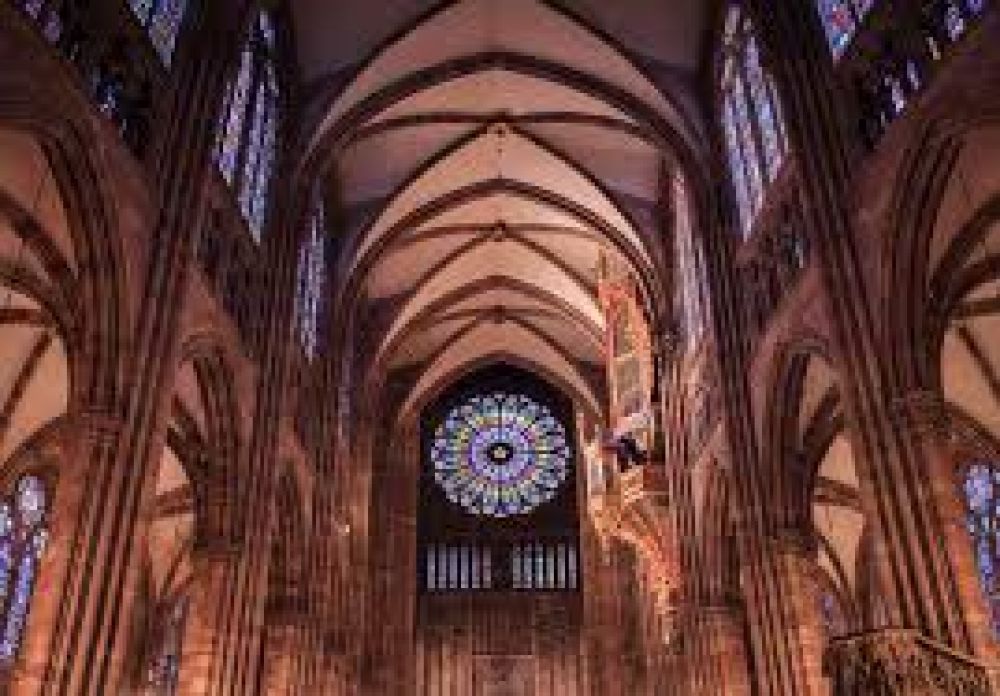

The Strasbourg Cathedral, also known as the Cathedral of Our Lady of Strasbourg, is a stunning example of high Gothic architecture and has been a pinnacle of heritage and faith in Strasbourg, France for centuries. Its history is deeply intertwined with the development of tourism in this quaint Alsace region.
The history of tourism at Strasbourg Cathedral can be traced back to the Middle Ages when pilgrims traveled far and wide to visit this sacred site. The construction of the cathedral started in 1015 and continued in various phases until its completion in 1439. The cathedral's prominence as a place of worship turned it into a natural tourist attraction, drawing visitors even before tourism became a recognized phenomenon.
During the Renaissance and beyond, the region's burgeoning wine trade and the Cathedral's growing reputation for its architectural magnificence and the astronomical clock attracted even more visitors. The 19th century marks a notable surge in tourism with the advent of the Romantic movement and the appreciation for Gothic architecture.
Fast forward to the 20th and 21st centuries, Strasbourg Cathedral has maintained its place as a top tourist destination in France. The addition of Strasbourg's Grande Île, including the Cathedral, to UNESCO's World Heritage List in 1988 further cemented its status as a must-see location for culture and history enthusiasts from around the world.
In recent decades, sustainable tourism has become a focus, with efforts to preserve the cathedral for future generations while still welcoming millions of visitors every year. The cathedral has adapted by incorporating visitor centers, guided tours, and educational programs to enhance tourist experiences without compromising its integrity.
The latest trends in tourism at Strasbourg Cathedral include the use of technology to engage visitors. Multimedia guides and augmented reality experiences offer an interactive dimension to exploring the site. Additionally, the Cathedral now often hosts events ranging from music concerts to art exhibitions, integrating cultural activities into the tourism experience.
Another recent development is the rise of thematic tourism, where visitors come to Strasbourg specifically to see the cathedral during special occasions, like the famous Strasbourg Christmas market, where the cathedral serves as a central backdrop to a magical festive atmosphere.
Moreover, social media has played a significant role in the recent tourism trend, with Strasbourg Cathedral becoming a popular backdrop for Instagram-worthy photos, attracting a younger generation of visitors keen on sharing their travel experiences online.
Today, Strasbourg Cathedral remains a symbol of the city's rich history and cultural significance. Its spire, which was once the tallest medieval structure in the world, continues to captivate the skyline, drawing tourists and admirers from across the globe. Many visit to marvel at the cathedral's detailed façade, the soaring stained glass windows, and the intricate astronomical clock—a masterpiece in its own right.
Visitors to the cathedral can enjoy its majesty, but they are also encouraged to explore the surrounding area of Strasbourg, which offers a mix of French and German cultures, delightful culinary experiences, and a picturesque setting along the Rhine River.
Ultimately, Strasbourg Cathedral embodies not just a place of spiritual significance but also a beacon of European heritage that continues to evolve with the changing tides of tourism.